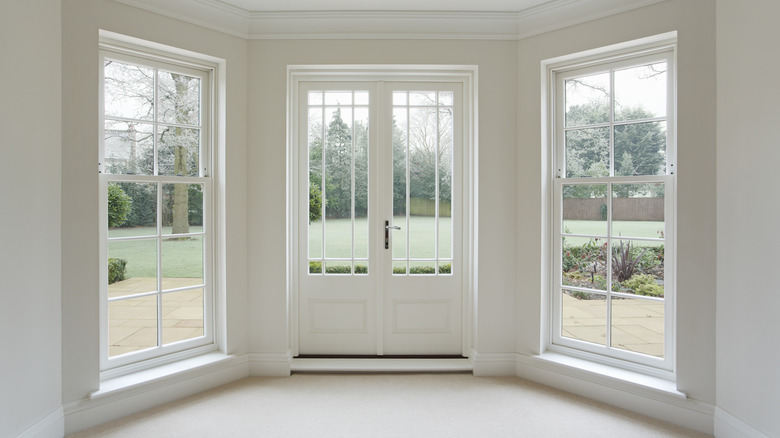How To Let Georgian Era Design Flow Into Your Home
Running from 1714 to 1830, the Georgian era (named for the succession of English King Georges I, II, III, and IV, who reigned during this period) brought together diverse design philosophies influenced by the architecture of the Roman and Greek civilizations. The interior design during this time was distinguished by certain hallmarks such as symmetry and balance — the keys to Georgian design. When you begin your home's transformation, the first step is to emulate these principles. In addition, the sight of stately fireplaces, commanding both attention and admiration, was a common feature. This, along with the high ceilings, created an air of spaciousness and grandeur. The widespread use of sash windows also contributed to a bright and airy feel, allowing ample natural light to permeate living spaces.
Despite the splendor and classicism that defined the Georgian era, a surprising layer of simplicity and functionality underpinned its design principles. This period was more minimal — characterized by fewer ostentatious displays and more practical, liveable luxury. The beauty of this simplicity is that it harmonizes effortlessly with the minimalistic approach of today's modern living standards.
One might assume that incorporating elements of Georgian design into a modern home would be a Herculean task, demanding a high level of expertise and effort. However, this is not the case. With careful thought, planning, and a keen eye for design, you can introduce the allure and charm of this historical period into your contemporary space without making it feel outdated or out of place.
Establishing the foundations of Georgian design
First, consider adding a Georgian fireplace. With their elegance and grandeur, Georgian fireplaces often serve as a room's focal point. They are characterized by their symmetrical design carved detailing, and use of materials such as marble or wood. To incorporate a Georgian fireplace in your home, you could refurbish an existing fireplace or install a reproduction. For authenticity, look for designs featuring classical motifs, like scrolls or fluting. Pair it with a grand mirror or painting above the mantel to truly capture the Georgian style. Despite its grandeur, the simplicity of the design allows it to blend seamlessly into modern interiors.
Another distinctive element to consider is the installation of sash windows. These vertically sliding windows are a signature feature of Georgian design, bringing both functionality and historical charm to any space. Sash windows are known for letting in a significant amount of light, so think about where that would be most beneficial in your home. Could your living room or study benefit from a brighter atmosphere? Once you've selected the rooms, plan for the windows to be a focal point, arranging furniture and decor to complement these new additions. All in all, by carefully considering the placement, design, materials, and installation of sash windows, you can ensure these timeless features enhance your home while adding a touch of historical beauty.
Injecting the Georgian spirit with details and furnishings
By organizing your furniture in symmetrical arrangements and maintaining a balanced visual weight, you can create an ambiance of harmony and proportion that is unmistakably Georgian. When choosing furnishings, select pieces that echo the era's appreciation for craftsmanship. Antique or reproduction furniture, characterized by intricate carvings and inlays, and made from dark, lustrous woods like mahogany, contribute to an authentic Georgian ambiance. The fireplace, a Georgian room's centerpiece, draws your attention. It becomes a stage for displaying ornate mirrors and classic art pieces, resonating with the spirit of the era.
When considering furniture colors, the traditional Georgian home palette consists of soft creams, dusty pinks, and sage greens— essentially warm, muted tones. Bathed in natural light streaming through large sash windows, these colors create an atmosphere of gentle warmth and tranquility that is quintessentially Georgian.
Finally, remember to pay attention to the smaller details, such as fabrics. If patterns are your thing, Georgian patterned fabrics are a treasure trove of design. Incorporating traditional Georgian motifs such as stripes and florals, can add that final finishing touch (and a layer of historical charm), whether you use them for upholstery, curtains, or decorative accents. Furthermore, consider tones that match the traditional Georgian palette for an authentic look. All in all, it's these smaller details that truly bring the Georgian era to life within your home, creating a space that feels both timeless and contemporary, elegant and comfortable.


